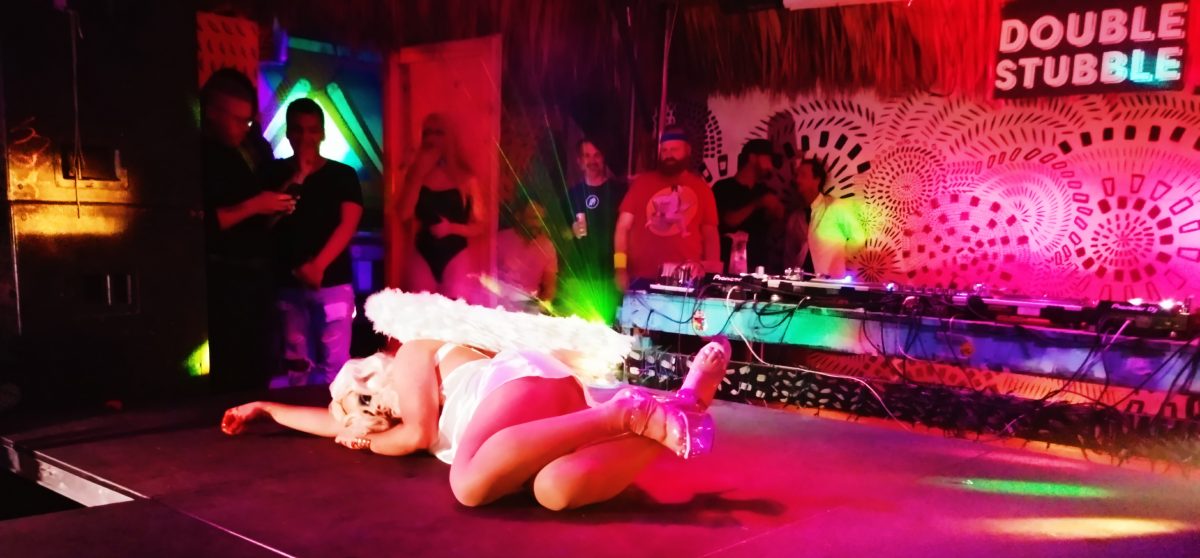This week, I really sought out to understand the new queer nightlife in Miami and how it takes shape. I have witnessed part of it myself, though it has been mostly in Wynwood. However, I want to understand how it has come up and how it takes shape throughout Miami. I also wanted to know the key players in the formation and maintenance of this nightlife. Fortunately, I found a Miami New Times article on queer nightlife in Miami and it is clear that drag performers – especially genderqueer ones – were the pioneers of this new nightlife.
Duran, Jose D. “Miami’s Queer Scene Transforms the City’s Nightlife.” Miami New Times, 27 November 2018.
The article begins with an anecdote of Jupiter Velvet, a transfemme drag queen, performing at FemmeBot, a one-off event that is part of the greater movement of queer nightlife. The author notes that for a long time, queer and gender non-conforming individuals have sought refuge in more open-minded cities (NYC, LA), but recently these individuals have chosen to stay and make a scene for themselves in Miami. He then lists a number of queer events that have become regular, including Double Stubble which is the focus of my photographs. In these events, a safe space is created for young people to experiment and express their gender without fear of judgment or disrespect. In these spaces, gender non-conformity and drag of all kinds is celebrated. The author briefly mentions a turn to more queer lifetsyles (non-heteronormative) which may not have been expected after the legalization of gay marriage. The author doesn’t mention why or how this happened. I argue that it might partly be to a growing visibility or gender non-conforming and non-heteronormative figures, such as Alok Vaid-Menon. It is a return to radical queer politics of the early gay liberation movement that did not seek to conform to heteronormative standards. After the achievement of assimilation, there is more space to explore outside of expected gender and sexual norms. Duran goes on to explain that Miami’s new queer spaces are for LGBTQ+ people (trans, poc, people of different body types)who have felt marginalized or unwelcomed in more traditional gay spaces.
Duran then goes on to give some history and background on how this scene came to be. In the 1980s & ’90s, gay nightlife in Miami was focused in South Beach. During this time, there was drag performances, but most drag queens were hyperfeminine and portrayed a specific, feminine version of women. In 1997, South Beach began to be heavily gentrified and the LGBTQ+ community that existed there was displaced and dispersed. Ironically, the reason why the gay scene in the 90s disappeared is partly the reason why it has re-emerged now. Around 2015, a new queer scene began to emerge in a bar in Overtown (a neighborhood now being gentrified and neighboring Wynwood) called The Corner. It began with a few queer people gathering there monthly, who at some point began wearing drag to these meetings, and eventually turned into The Counter Corner, a monthly drag show that is still going. The Counter Corner was the birthplace of the most prominent drag personas in Miami right now, including Jupiter Velvet and Miss Toto.
The rest of the article, Duran goes on to describe and discuss current drag events that happen regularly. One in particular is of interest to me. GenderBlender, a monthly experimental drag show, is held in Las Rosas bar in Alllapatah, my home neighborhood. Growing up in Allapatah, I would have never suspected or even dreamed that a drag show would be happening in my neighborhood. This neighborhood, from personal experience, is not queer friendly whatsoever. However, Las Rosas is right at the border of Wynwood and Allapatah. This might be Wynwood bleeding into the neighborhood, but it might also be an indication of the oncoming gentrification of Allapatah.
